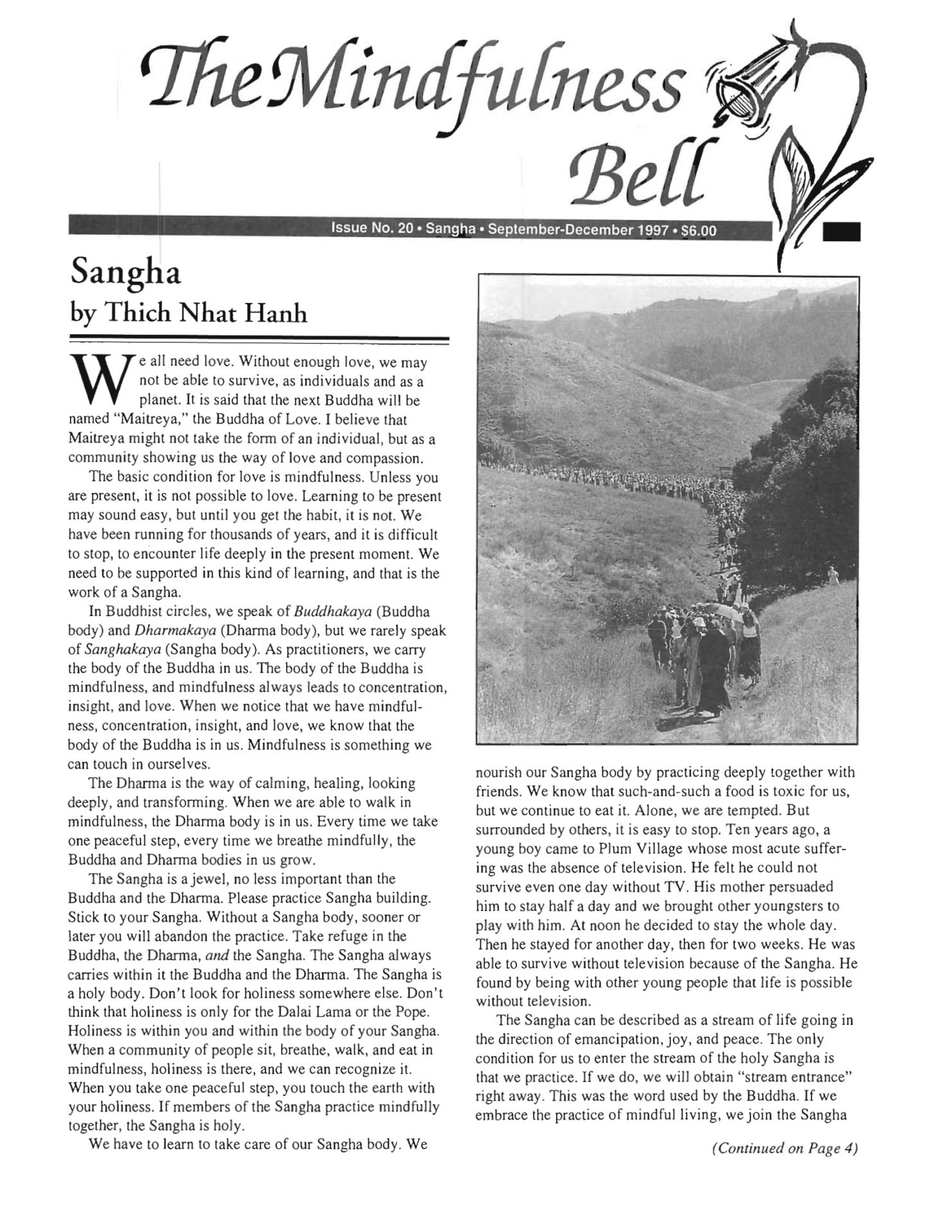By David Dimmack
Young people are the flowers of our Retreat Sangha. They radiate innocence and spontaneity, and their fresh smiles remind us that our retreat can be joyful as well as peaceful. In them we see our own innocence and freshness. Their presence is an important gift.
Unconditional acceptance of each young person and relentless patience are essential in planning a young people’s program. In 1989, I observed my son and daughter with Sister Chan Khong and other nuns.
By David Dimmack
Young people are the flowers of our Retreat Sangha. They radiate innocence and spontaneity, and their fresh smiles remind us that our retreat can be joyful as well as peaceful. In them we see our own innocence and freshness. Their presence is an important gift.
Unconditional acceptance of each young person and relentless patience are essential in planning a young people's program. In 1989, I observed my son and daughter with Sister Chan Khong and other nuns. They were learning a skit to present to the Sangha. The group was loud and wild, but what impressed me was the nuns' calm, gentle, and persistent approach. There was not even a hint of scolding (which I was inclined to do). They calmly and consistently directed the young people back to the task. I aspire to practice this teaching in fathering, and it is probably why I lead these programs whenever possible. As Thay says, "When a tree does not grow right, the farmer does not blame the tree. He changes how he treats the tree." These words encourage our mindfulness in our relations to our vulnerable and impressionable young people.

Young people's programs usually include singing, pebble meditation, and the bell of mindfulness. The primary song and pebble meditation are based on a gatha from The Blooming of a Lotus: In-Out, Flower-Fresh, Mountain-Solid, Water-Reflecting, Space-Free. We often sing the Two Promises of developing understanding and compassion. Both songs have accompanying hand gestures that young people enjoy learning, and help set a lighthearted tone. Betsy Rose's tape, "In My Two Hands," has many songs children enjoy, Music, song, and story are essential to a young people's program.
In pebble meditation, each person makes a pouch and finds five pebbles it can hold. Each pebble represents one phrase of the gatha. When it's time to meditate, we place our pebbles in a pile. We pick our In-Out pebble, hold it and look at it, breathe with it, and imagine the phrase, then lay it on a new spot. With the next pebble, we imagine being a flower and feeling fresh, and place it with the first pebble.
We leisurely transfer our pebbles, one by one, to their new spot-looking, holding, breathing, and remembering. We then replace them in our pouch or begin again. Children of all ages can learn to meditate this way.
Each young person also practices being bellmaster. When calm and ready, the beIlmaster stops and bows to the small bell, slowly picks it up, holds it in the palm of their hand, and raises it to eye level. Looking at it, they imagine they are holding a precious gift. Using the smaIl wooden stick, they tap the bell to wake it up and let everyone know to become quiet. Then, with a full stroke, they sound a long, beautiful tone. Everyone enjoys three full breaths and returns to what they were doing more refreshed and aware. Young people also enjoy apple meditation, relaxation, drawing and craft projects, discussions and sharing, reading and storyteIling, improvisational skits, interactive games and open play, stretching, tumbling, hiking, jokes, and just hanging out. Often, they present songs, skits, drawings, or Dharma recitations to the Sangha. A happy program tends to be loosely structured, allowing each person to focus on their own project. Monks, nuns, musicians, storytellers, and others are welcome visitors. We want to cultivate the seeds of mindfulness in these tender young sprouts and have it be fun.
A young people's program reflects the positive attitude of the Sangha. Feelings of trust and cooperation grow between everyone involved. Young people welcome the slower, gentle rhythm of the meditation and retreat process, away from television and other fast-paced gadgets.
Local Sanghas can create similar programs. Playfulness and mindfulness need not be separate-breathing and smiling as well as a balloon or a funny hat works wonders. As Phaedrus says, "The mind ought sometimes to be diverted that it may return to better thinking." A leader only needs to provide a few simple activities, be devoted to gentle play, and be willing to be a little foolish. Let the collective playfulness of your Sangha be your guide.
David Dimmack, True Mirror, has assisted with young people's programs since 1991. He practices with the Ambler, Pennsylvania, Sangha.

